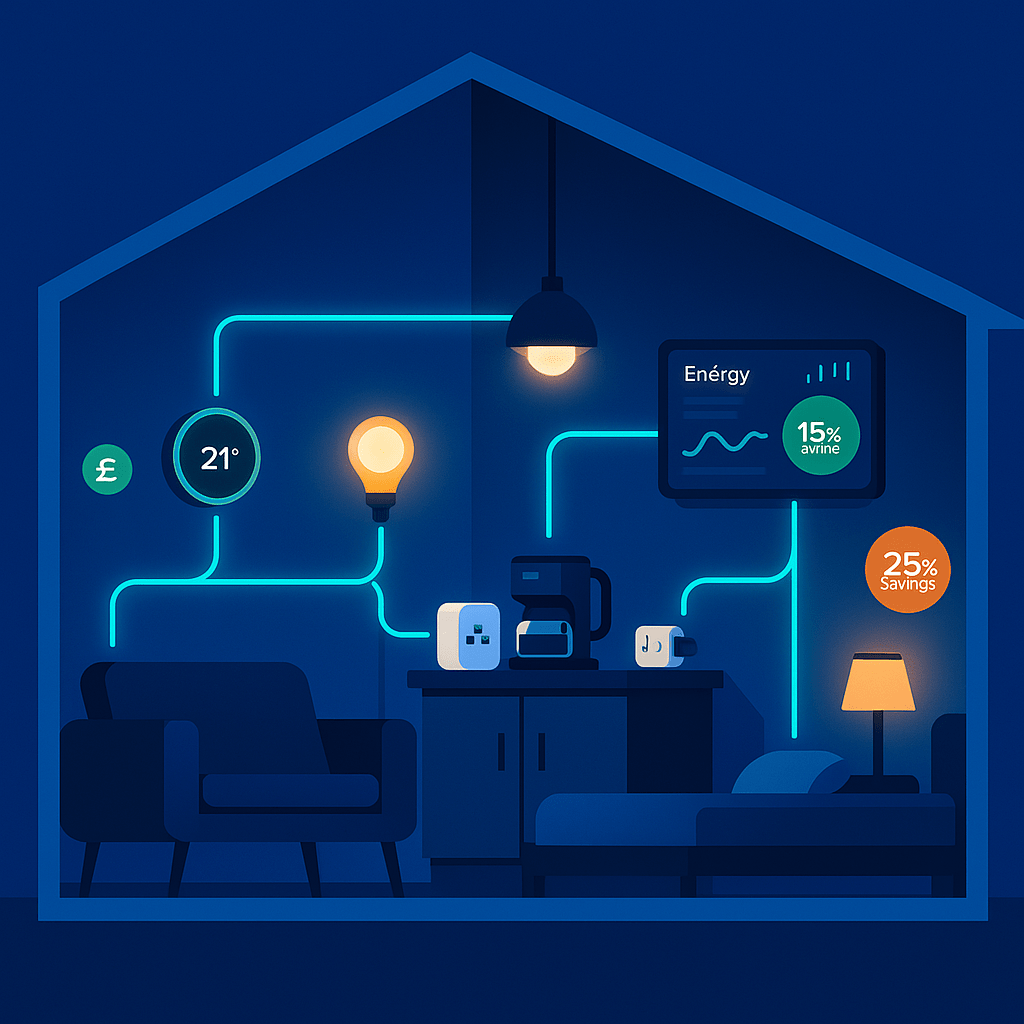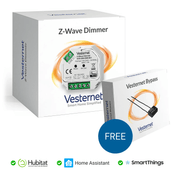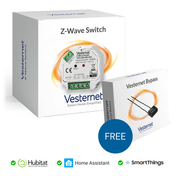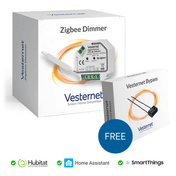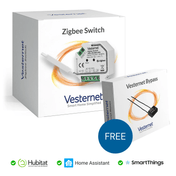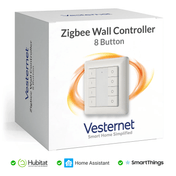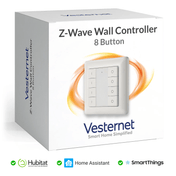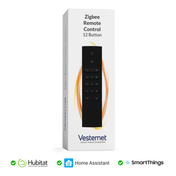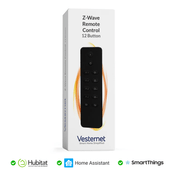In een tijdperk waarin energiekosten blijven stijgen en milieubewustzijn de beslissingen van consumenten beïnvloedt, is smart home-technologie een krachtige oplossing gebleken om zowel de energierekening als de CO2-voetafdruk te verminderen. De vraag waar veel huiseigenaren voor staan, is niet of slimme apparaten geld kunnen besparen, maar welke apparaten het beste rendement op hun investering opleveren en hoe snel deze besparingen zich manifesteren.
Deze uitgebreide gids onderzoekt de meest effectieve energiebesparende slimme apparaten voor thuisgebruik, biedt een gedetailleerde kostenanalyse en berekent realistische terugverdientijden om u te helpen weloverwogen beslissingen te nemen over uw investeringen in huisautomatisering. slimme thermostaten Van slimme systemen die uw energierekening met 26% kunnen verlagen tot intelligente verlichtingssystemen die het energieverbruik met 90% terugdringen. We onderzoeken de technologieën die daadwerkelijk financiële voordelen opleveren en tegelijkertijd uw dagelijkse comfort en gemak vergroten.
De markt voor smarthomes is aanzienlijk volwassen geworden en is verder gegaan dan alleen maar nieuwe gadgets. Er zijn nu praktische oplossingen die echte huishoudelijke uitdagingen aanpakken. Volgens recent onderzoek kunnen smarthomeapparaten het totale energieverbruik met 10-30% verlagen, wat neerkomt op een jaarlijkse besparing van £ 200-£ 600 voor een gemiddeld Brits huishouden. Niet alle slimme apparaten zijn echter gelijk als het gaat om energiebesparing. Het is dan ook cruciaal om te begrijpen welke investeringen het meeste rendement opleveren om de financiële voordelen van uw smarthome te maximaliseren.

Energie-efficiëntie van slimme huizen begrijpen
Energie-efficiëntie in een slim huis is gebaseerd op drie fundamentele principes: automatisering, optimalisatie en monitoring. In tegenstelling tot traditionele huissystemen die volgens vaste schema's of handmatige bediening werken, passen slimme apparaten zich continu aan aan gebruikspatronen, omgevingsomstandigheden en bezetting om energieverspilling te minimaliseren en tegelijkertijd het comfortniveau te behouden.
Dankzij de automatisering worden menselijke fouten en vergeetachtigheid geëlimineerd: twee belangrijke factoren die bijdragen aan energieverspilling in traditionele huizen. Slimme bewegingssensoren kan automatisch de verlichting uitschakelen wanneer kamers niet bezet zijn, de verwarming en koeling aanpassen op basis van de werkelijke bezetting in plaats van vooraf ingestelde schema's, en elektronica uitschakelen die anders stand-bystroom zou verbruiken. Deze geautomatiseerde aanpak van energiebeheer kan een oplossing bieden voor wat experts 'vampierstroom' of stand-bystroomverbruik noemen, dat goed is voor 5-10% van het totale energieverbruik van huishoudens en voor sommige huishoudens tot wel £ 100 per jaar kan kosten.
Optimalisatie gaat verder dan eenvoudige aan-/uitregelingen: het energieverbruik kan nauwkeurig worden afgestemd op de actuele omstandigheden. Slimme thermostatenVolg bijvoorbeeld niet alleen geprogrammeerde schema's, maar leer van bezettingspatronen, weersvoorspellingen en zelfs de thermische eigenschappen van uw huis om ruimtes efficiënt voor te verwarmen of te koelen. Deze intelligente aanpak kan het energieverbruik voor verwarming en koeling met 12-26% verminderen in vergelijking met traditionele programmeerbare thermostaten.
Dankzij de monitoringfunctie krijgt u ongekend inzicht in energieverbruikspatronen. Zo kunnen huiseigenaren inefficiënties identificeren en weloverwogen beslissingen nemen over hun energieverbruik. Slimme apparaten voor energiebewaking kunnen inzichtelijk maken welke apparaten de meeste stroom verbruiken, slimme meters geven realtime feedback over energiekosten en uitgebreide energiebeheersystemen voor thuis kunnen het verbruik in meerdere categorieën bijhouden om zo mogelijkheden voor verdere besparing te identificeren.
Moderne smarthomesystemen integreren ook met elektriciteitstarieven op basis van het tijdstip van gebruik, waardoor energie-intensieve activiteiten automatisch worden verschoven naar periodes waarin de elektriciteitstarieven lager zijn. Deze mogelijkheid wordt steeds waardevoller naarmate nutsbedrijven dynamische prijsstructuren implementeren die consumenten belonen voor het verminderen van de vraag tijdens piekperiodes.
Slimme thermostaten: de basis voor energiebesparing
Slimme thermostaten vertegenwoordigen de meest impactvolle investering voor de meeste huishoudens die hun energiekosten willen verlagen door middel van domotica. Aangezien verwarming en koeling goed zijn voor maar liefst 55% van het totale energieverbruik, kunnen zelfs bescheiden verbeteringen in de HVAC-efficiëntie al leiden tot aanzienlijke besparingen.
De financiële argumenten voor slimme thermostaten zijn overtuigend. Onderzoek toont aan dat gebruikers van hoogwaardige slimme thermostaten gemiddeld 12-15% per jaar besparen op verwarmings- en koelingskosten, wat neerkomt op £ 131-£ 145 per jaar voor een gemiddeld huishouden in het Verenigd Koninkrijk. Agressievere implementaties kunnen nog hogere rendementen opleveren: sommige gebruikers van slimme thermostaten kunnen tot wel 26% besparen, wat de jaarlijkse verwarmings- en koelingskosten met £ 250 of meer kan verlagen.
Hoe slimme thermostaten superieure efficiëntie bereiken
De efficiëntiewinst van slimme thermostaten vloeien voort uit diverse geavanceerde mogelijkheden die traditionele programmeerbare thermostaten niet kunnen evenaren. Leeralgoritmen analyseren bezettingspatronen in de loop van de tijd en passen temperatuurschema's automatisch aan op basis van de tijdstippen waarop bewoners doorgaans wakker worden, naar hun werk vertrekken, thuiskomen en gaan slapen. Dit elimineert het veelvoorkomende probleem van het verwarmen of koelen van lege huizen als gevolg van vergeten handmatige instellingen of een te rigide programmering.
Geofencingtechnologie tilt automatisering naar een hoger niveau door locatiegegevens van smartphones te gebruiken om te detecteren wanneer bewoners hun huis naderen of verlaten. Het systeem kan het huis al voorverwarmen of -koelen voordat het arriveert, en zorgt er tegelijkertijd voor dat er geen energie wordt verspild aan klimaatbeheersing wanneer iedereen weg is. Deze proactieve aanpak zorgt voor comfort en minimaliseert het energieverbruik tijdens periodes van afwezigheid.
Afstandssensoren vergroten het bereik van de thermostaat, ook buiten de gemonteerde locatie, waardoor een nauwkeurigere temperatuurregeling mogelijk is op basis van het daadwerkelijke kamergebruik in plaats van de temperatuur in de gang. Als het gezin 's avonds doorgaans in de woonkamer samenkomt, temperatuursensoren kunnen ervoor zorgen dat de ruimte de gewenste temperatuur bereikt, terwijl minder gebruikte ruimtes op energiezuinigere instellingen kunnen worden bediend.
Dankzij weerintegratie kunnen slimme thermostaten anticiperen op de verwarmings- en koelbehoefte op basis van de voorspelde omstandigheden. Op bijzonder warme of koude dagen kan het systeem de temperatuur eerder en geleidelijker aanpassen, waardoor de energiepieken die gepaard gaan met snelle temperatuurschommelingen worden verminderd en het comfortniveau constant blijft.
Kostenanalyse en terugverdientijdberekeningen
De investeringscase voor slimme thermostaten is eenvoudig als je zowel de initiële kosten als de doorlopende besparingen bekijkt. Kwalitatieve slimme thermostaten variëren van £100 voor basismodellen tot £350 voor premiummodellen met geavanceerde functies en meerdere sensoren. Maar zelfs middenklassemodellen bieden doorgaans uitgebreide energiebesparende mogelijkheden.
Voorbeeldberekening: Een slimme thermostaat van £ 250 die 15% bespaart op een jaarlijkse verwarmings- en koelingsrekening van £ 968, bespaart £ 145 per jaar. Dit levert een terugverdientijd op van slechts 1,7 jaar, waarna het apparaat gedurende de resterende levensduur, doorgaans 10-15 jaar, pure besparingen oplevert. Over een periode van tien jaar kan de cumulatieve besparing meer dan £ 1.450 bedragen, wat neerkomt op een rendement op de investering van bijna 600%.
Voor huishoudens met een hoger energieverbruik of huishoudens die overstappen van standaard handbediende thermostaten, kunnen de besparingen nog aanzienlijker zijn. Woningen met slechte isolatie, oudere HVAC-systemen of onregelmatige bezettingspatronen profiteren vaak het meest van de implementatie van slimme thermostaten.

Intelligente verlichting: meer dan alleen LED-upgrades
Hoewel verlichting ongeveer 5% van het gemiddelde energieverbruik van een huishouden voor zijn rekening neemt, kan de combinatie van ledtechnologie en slimme lichtregeling onevenredig grote besparingen opleveren dankzij de drastische efficiëntieverbeteringen en het eenvoudige implementatieproces. Slimme verlichtingssystemen bouwen voort op de basis van ledefficiëntie en creëren geautomatiseerde, responsieve verlichting die energieverspilling minimaliseert en tegelijkertijd het gemak en de sfeer verbetert.
De financiële impact van de overstap naar slimme ledverlichting is direct en aanzienlijk. Gebaseerd op de huidige Britse elektriciteitsprijzen van 24,86 pence per kWh kost een enkele ledlamp van 3 W slechts £ 2,74 per jaar om 10 uur per dag te branden, vergeleken met £ 36,14 voor een gloeilamp van 40 W – een besparing van £ 33,40 per lamp per jaar. Voor een gemiddeld huis met 20-30 lampen kan de jaarlijkse besparing door alleen al de overstap naar ledverlichting oplopen tot meer dan £ 600-£ 900.
Slimme verlichtingssystemen vergroten deze besparingen door middel van intelligente automatisering. Hierdoor branden de lampen alleen als dat nodig is en met de juiste helderheid. Bewegingssensoren kan het energieverbruik voor verlichting met nog eens 30-50% verminderen door automatisch de verlichting uit te schakelen in ruimtes waar niemand aanwezig is, terwijl daglichtsensoren de kunstmatige verlichting aanpassen op basis van het beschikbare natuurlijke licht, waardoor onnodig energieverbruik nog verder wordt verminderd.
De technologie achter slimme verlichtingsefficiëntie
Moderne slimme verlichtingssystemen maken gebruik van meerdere technologieën om het energieverbruik te optimaliseren en tegelijkertijd optimale verlichtingsniveaus te behouden. Aanwezigheidsdetectie maakt gebruik van passieve infraroodsensoren, microgolfsensoren of camerasystemen om de bezetting van een ruimte te bepalen en de verlichting automatisch aan te passen. In tegenstelling tot eenvoudige bewegingssensoren die op vaste timers werken, zijn geavanceerde bezettingsdetectiesystemen kan onderscheid maken tussen verschillende soorten bewegingen en de gevoeligheid aanpassen op basis van de gebruikspatronen van de ruimte.
Daglichtbenutting past de kunstmatige lichtsterkte automatisch aan op basis van het beschikbare natuurlijke licht, waardoor een consistente verlichting wordt gegarandeerd en het energieverbruik wordt geminimaliseerd. Fotosensoren monitoren continu de omgevingslichtsterkte en dimmen of versterken led-armaturen om de gewenste verlichtingssterkte te behouden. Deze technologie is met name effectief in ruimtes met wisselend natuurlijk licht gedurende de dag, zoals kantoren, keukens en woonruimtes met grote ramen.
Circadiaanse verlichtingssystemen passen zowel de helderheid als de kleurtemperatuur gedurende de dag aan om natuurlijke slaap-waakcycli te ondersteunen en tegelijkertijd de energie-efficiëntie te optimaliseren. 's Avonds schakelen deze systemen automatisch over op warmer, gedimd licht dat minder energie verbruikt en tegelijkertijd een betere slaapkwaliteit bevordert. De ochtend- en middagverlichting maakt gebruik van koelere, helderdere instellingen die de alertheid en productiviteit verhogen.
Slimme stekkers en energiebeheer: een einde aan vampierenergie
Het fenomeen "vampierstroom" of stand-bystroomverbruik is een van de meest over het hoofd geziene bronnen van energieverspilling in moderne huizen. Elektronische apparaten blijven stroom verbruiken, zelfs als ze uit staan. Deze fantoombelasting is goed voor 5-10% van het totale energieverbruik van huishoudens en kost veel Britse huishoudens jaarlijks tot wel £ 100. Slimme stekkers Geavanceerde energiebeheersystemen bieden een betaalbare en effectieve oplossing om deze verspilling tegen te gaan en bieden daarnaast extra gemak en controlemogelijkheden.
Slimme stekkers fungeren als intelligente bemiddelaars tussen stopcontacten en aangesloten apparaten, waardoor bediening, planning en energiebewaking van elk apparaat of elektronisch apparaat op afstand mogelijk is.In tegenstelling tot permanente elektrische aanpassingen kunnen slimme stekkers direct in elk standaardstopcontact worden geplaatst. Daarmee zijn ze het meest toegankelijke startpunt voor slim energiebeheer in huis.
De financiële impact van het aanpakken van vampiermacht door middel van slimme stekkers is direct en meetbaar. Een uitgebreide implementatie van slimme stekkers gericht op grote energievreters – televisies, computerapparatuur, keukenapparatuur en entertainmentsystemen – kan het stand-byverbruik met 80-90% verminderen. Voor een huishouden dat jaarlijks £100 aan energievreters uitgeeft, vertaalt zich dit in een jaarlijkse besparing van £80-£90 bij een investering van £150-£200 in slimme stekkers, wat neerkomt op een terugverdientijd van minder dan twee jaar.
Uitgebreid slim energiebeheer voor thuis
Hoewel individuele slimme apparaten aanzienlijke energiebesparingen opleveren, ontstaan de grootste voordelen wanneer deze technologieën samenwerken als een geïntegreerd ecosysteem voor energiebeheer. Uitgebreide energiebeheersystemen voor slimme woningen coördineren meerdere apparaten en databronnen om het totale energieverbruik te optimaliseren, extra efficiëntiemogelijkheden te identificeren en huiseigenaren bruikbare inzichten te bieden voor verdere verbeteringen.
Moderne energiebeheerplatforms verzamelen gegevens van slimme meters, individuele apparaatmonitoren, weerdiensten en prijssystemen van nutsbedrijven om een compleet beeld te krijgen van het energieverbruik van huishoudens. Deze holistische aanpak maakt geavanceerde optimalisatiestrategieën mogelijk die rekening houden met de interacties tussen verschillende systemen en de wisselende energiekosten gedurende de dag.
De financiële voordelen van uitgebreid energiebeheer reiken verder dan de som van de besparingen per apparaat. Geïntegreerde systemen kunnen een totale energiebesparing van 20-35% in een huishouden opleveren, vergeleken met 10-15% bij implementaties van individuele apparaten. Deze verbeterde prestaties zijn te danken aan de mogelijkheid om meerdere systemen op elkaar af te stemmen en het energieverbruik voor alle huishoudelijke functies tegelijkertijd te optimaliseren.
Rendement op investeringsanalyse
De financiële argumenten voor slimme energiesystemen voor thuis worden overtuigend wanneer zowel de besparingen op korte termijn als de waardecreatie op lange termijn worden onderzocht. Een uitgebreide analyse moet rekening houden met de initiële investeringskosten, de doorlopende energiebesparingen, onderhoudsvoordelen, verzekeringsvoordelen en de waardestijging van het onroerend goed om het totale rendement op de investering nauwkeurig te kunnen beoordelen.
| Apparaatcategorie | Initiële investering | Jaarlijkse besparingen | Terugverdientijd | 10-jarige ROI |
|---|---|---|---|---|
| Slimme thermostaat | € 250 | €145 | 1,7 jaar | 580% |
| Slimme verlichting | €200 | €125 | 1,6 jaar | 625% |
| Slimme stekkers | €150 | € 85 | 1,8 jaar | 567% |
| Waterbeheer | €400 | €120 | 3,3 jaar | 300% |
| Uitgebreid systeem | € 1.500 | € 600 | 2,5 jaar | 400% |
Deze berekeningen tonen aan dat zelfs uitgebreide smart home-implementaties doorgaans binnen 2-3 jaar worden terugverdiend, waarna ze gedurende hun operationele levensduur aanzienlijke, aanhoudende besparingen opleveren. Over een periode van 10 jaar bedraagt het rendement op de investering in de meeste smart home-energiesystemen meer dan 300-600%, waardoor ze tot de aantrekkelijkste investeringen in woningverbetering behoren.
De analyse wordt nog gunstiger als we extra voordelen naast de directe energiebesparing in ogenschouw nemen.Slimme huissystemen kunnen verzekeringspremies met 5-15% verlagen dankzij verbeterde beveiliging en lekdetectie. Een waardestijging van 3-5% is gebruikelijk voor woningen met uitgebreide slimme systemen, wat een extra rendement oplevert bij verkoop.
Implementatiestrategie en beste praktijken
Succesvolle implementatie van slimme energie voor thuis vereist zorgvuldige planning, gefaseerde implementatie en voortdurende optimalisatie om zowel de besparingen als de gebruikerstevredenheid te maximaliseren. De meest effectieve aanpak is doorgaans om te beginnen met krachtige, goedkope apparaten en deze geleidelijk uit te breiden naar uitgebreidere systemen naarmate de ervaring en het vertrouwen toenemen.
De optimale implementatievolgorde geeft prioriteit aan apparaten met de kortste terugverdientijden en het grootste energiebesparingspotentieel. Slimme thermostaten bieden doorgaans de beste combinatie van hoge besparingen en onmiddellijke impact, waardoor ze ideale eerste investeringen zijn. Slimme verlichting en slimme stekker Implementaties kunnen snel volgen, wat extra besparingen oplevert en tegelijkertijd de vertrouwdheid met slimme technologieën voor in huis vergroot.
Professionele energieaudits kunnen de meest veelbelovende kansen voor investeringen in slimme woningen identificeren en helpen bij het prioriteren van implementaties op basis van specifieke kenmerken van het huishouden. Bij deze beoordelingen wordt rekening gehouden met factoren zoals de efficiëntie van bestaande apparatuur, gebruikspatronen en lokale nutsvoorzieningen om op maat gemaakte aanbevelingen te ontwikkelen voor maximale besparingen.
Integratieplanning zorgt ervoor dat individuele apparaten effectief samenwerken en in de loop van de tijd kunnen worden uitgebreid tot complete systemen. Door apparaten te kiezen die gangbare communicatieprotocollen ondersteunen, zoals
Conclusie
Energiebeheer voor slimme woningen is een volwassen, bewezen aanpak om de energiekosten van huishoudens te verlagen en tegelijkertijd comfort, gemak en de waarde van het onroerend goed te verhogen. De combinatie van geavanceerde apparaatefficiëntie, intelligente automatisering en uitgebreide monitoringmogelijkheden maakt een energiebesparing van 20-35% mogelijk voor de meeste huishoudens, wat neerkomt op een jaarlijkse besparing van £ 200-£ 600 of meer.
De financiële argumenten voor investeringen in slimme energie voor thuis zijn overtuigend voor alle belangrijke apparaatcategorieën, met terugverdientijden die doorgaans variëren van 1,5 tot 3 jaar en een rendement op de lange termijn van meer dan 300 tot 600%. Deze rendementen steken gunstig af bij de meeste andere investeringen in woningverbetering en bieden blijvende voordelen gedurende de gehele operationele levensduur van de systemen.
Klaar om de energie-efficiëntie van uw huis te verbeteren met slimme automatisering? Ontdek ons uitgebreide aanbod van slimme thermostaten En energiebewakingsapparaten om de perfecte match te vinden voor uw specifieke behoeften en budget. Ons deskundige team staat klaar om u te helpen bij het kiezen van de ideale oplossing voor het energiebeheer van uw woning.
Of u nu een nieuw smart home-systeem bouwt of een bestaande installatie uitbreidt,

